- Home
- Bill James
Popular Crime Page 4
Popular Crime Read online
Page 4
Mr. Clemens argued that Mary and the tall, dark man were forced into the roadhouse by the afternoon thunderstorm, and were marooned there for some time by the downpour. They never left the house alive.
There are problems with this explanation, but I am inclined to accept Mr. Clemens’ theory. It seems to me that Mrs. Loss and her mischievous sons keep barging into the narrative rather too often, telling a series of stories, none of them true. We have persons of bad character who are known to be at the scene of a crime, later telling stories which are not true and withholding and then coming forward with pertinent information—more than once. That’s a damaging combination. It is puzzling that the contemporary authorities failed to rigorously investigate the Loss family, but … those things happen. I believe that the Loss boys killed Mary Rogers.
I argued before that popular crime stories are much more important in re-shaping our culture than we are generally willing to see. I don’t mean to overstate the importance of the Mary Rogers story, and I’m not expert enough in all of these areas to be certain that I am not over-stating it, but … if you read a history of metropolitan police departments, I am certain that it will reference the significance of the Mary Rogers case in leading to the re-organization of the New York police department in 1845. If you read the early history of abortion law, I am confident that it will reference the Mary Rogers story. If you study the history of the detective story, I feel sure that you will find that the Mary Rogers stories were critical to that genre’s breaking out of its narrow early trench, and becoming a part of the culture. If you know anything about the history of journalism, you certainly know that the newspaper business rode on the backs of crime stories for a hundred years, the Mary Rogers case being one of the sturdiest carriers. But if you read a history of America in the 1840s, it is likely that not a word will be said about Mary Rogers.
III
“Compare Yale or Dartmouth, where the regimen is that of `moderate Calvinism’, with Harvard. The state of morals at the latter is, to say the least, not lower than at other institutions. The observation of the Puritan happens in an editorial on `murder and other capital crimes’. The occurrences at Yale should shut the mouths of Calvinists as to any opinion like that we have here noticed.”
—CHRISTIAN REGISTER, JULY 22, 1848
In December, 1841, Ann McAllister was found in a canal in Boston, the circumstances indicating murder. This is sometimes referred to as Boston’s Mary Rogers case. McAllister, apparently also a beautiful young woman, cultivated and well-educated, had come to the city in 1835 from Ellsworth, Maine. She was 16 years old at the time, invited by a friend to come to Boston and learn a trade.
The friend died a year after, however, and Miss McAllister began relying on more tenuous friendships. She learned the trade of attending balls and parties, at which she was apparently quite successful, and became engaged to a Boston artist. However, according to some frustrated novelist working for the Boston Cultivator (December 11, 1841), “the brute who is supposed to have caused her death fixed his eye upon her, and determined to accomplish her ruin. He whispered false stories in the ear of her lover, and excited his jealousy by various stratagems, until he finally brought on a quarrel between them, and by pretending to take the part of the woman, won her confidence, and gained access to her heart.” She “admitted him to her society,” reports the would-be Dickens, by which he means that she began having sex with him, and he supported her financially for a time. After a time he cut her off. She began to drink heavily, and eventually wound up in the water. To the best of my knowledge this very sad case was never resolved by the law—making four in a row for us, as the law also failed to finish off the cases of Elma Sands, Helen Jewett and Mary Rogers.
Within a few years Boston would have its own mega case, perhaps bigger than Mary Rogers, but before I get to that there was a point I wanted to make. In the summer of 2005, in the wake of the Natalee Holloway case and several similar, there was a media contretemps provoked by objections from minority groups that the media was focusing disproportionately on what they called “Missing White Girl” cases, and ignoring murders that occurred in the black community, murders and disappearances of men, and murders and disappearances of ordinary, frumpy-looking people. As far as CNN knows, you’re not missing unless you’re cute.
While this is certainly true, what I wanted to point out is that this is not a function (or malfunction) of the modern media. This is the way it has always been. Popular crime stories are of many different types and descriptions, and it is not easy to say why one case becomes famous and another does not. In my view, it is not possible to predict whether a crime will become famous, based on the elements of the crime. What makes a crime famous is not the crime itself but the way the media reacts to it, which depends to a large extent on the contextual dynamics of the media competition. It’s like a fire … what makes one fire grow huge and another die out quickly is not that there is a difference between one fire and the other; it’s the context in which the fire starts.
However, while it is essentially unpredictable which crime story will explode into a media firestorm, there are certain elements that the biggest crime stories tend to have in common. Number one is an attractive victim. It is inherent in the definition of the word “attractive.” It means that others pay attention. The murders of children and pretty women are dry tinder, especially children and women of privilege.
Let me suggest a theory, and if I’m wrong, perhaps you will be tolerant enough not to be angry with me. Popular crimes stories are an expression of our impulse to draw a protective circle around ourselves. The interest that we take in a crime is therefore proportional to the sense it creates that our sanctuary may have been violated. If we suspect that our perimeter has been violated, we are immediately concerned to locate, identify, and rectify the problem.
The murders of men tend not to alarm us because, on a certain level, we perceive men as voluntarily accepting risks by leaving the protective bubble of the community to go on hunter/gatherer missions. If you are interjecting here that this perception is sexist and archaic … well, that’s right, it is. Much of our social behavior is sexist and archaic. When men are murdered, we tend to “think” … I shouldn’t say think because it isn’t really thought. We tend to internalize that as “Somewhere out in the dangerous world, something happened to him.” We don’t feel threatened by that, at least on the same level as if the crime occurred within our community.
When a pretty young girl is murdered, we tend to internalize that as “somebody is after our women.” Somebody has broken into our camp. Women feel threatened by that, and men challenged. We feel that it is our job to protect the women, and we react viscerally to any sense that we have failed to do this.
When a child is murdered by his or her parents, that does not tend to be a big story, because we don’t perceive that as a violation of our circle, but rather, as something that happened within some other circle. That was somebody else’s cave. When a child is or may have been murdered by outsiders, that is even more likely to become a huge story than is a missing white girl.
The murders of black people tend not to explode as popular crime stories because we tend, on some level, to perceive them as not belonging to “our” group, our camp. If you want to say that this is racist and archaic … well, yes, of course it is. Much of our social behavior is racist and archaic. As time passes and our society’s racist history recedes, this will become gradually less true. But it will be many, many years before we tend to perceive a crime against a man the same way we perceive a crime against a woman—and society is more likely to eliminate crimes against children than to learn to react to them the same way we react to crimes against adults.
Celebrated murders … what a horrible phrase. Celebrated murders tend to have other things in common. They tend to happen on Sundays, and on or very near holidays. Elma Sands and Mary Rogers both disappeared on Sundays; Helen Jewett was murdered early on Sunday morning. Elizabeth Canning di
sappeared on New Year’s Day, Laci Peterson and JonBenet Ramsey right around Christmas (and also Elma Sands). Marilyn Sheppard was murdered on the Fourth of July. The Zodiac referred to two of his crimes as the Christmas murder and the Fourth of July murder. These similarities also are trying to tell us something about the nature of popular crime, but I’d better get back to the narrative.
The stage for the Harvard murder had been set several years earlier by a murder at Yale. In late October, 1843, a Yale tutor, John Dwight, stumbled across a group of underclassmen who were amusing themselves by breaking some windows. The hooligans split up and ran, and Dwight and another man took out after them. Dwight, who was 21 years old and athletic, had the misfortune to catch up with his culprit, a sophomore named Lewis Fassitt. Fassitt pulled a large knife and stabbed the tutor three times. The wounds did not appear to be life-threatening, but Dwight developed a fever, and died a few days later. Fassitt, from a wealthy family, posted a $3,000 bond and went back to his home in Philadelphia, and the law essentially kept the $3,000 and dropped the matter. At that time it was so difficult and so expensive to track down and arrest a man out of state that, even though this was a high-profile murder case, they just didn’t bother. Ain’t that a kick in the pants?
The press chewed over this murder and the failure to prosecute quite a bit; in fact, I found two newspaper articles from the period which referred to “these murders at Yale.” When you are researching a crime book a phrase like “these murders at Yale” will get your attention, but I think there was only the one. My father would do that; if there was a break-in at a store downtown and he wished to generalize from it, he would refer to it as “these break-ins downtown.”
While it is impossible to predict what makes a crime story explode, the Yale murder had certainly lit the fuse for the furor that surrounded the Harvard case. The president of Harvard, Josiah Quincy, mentioned the Yale murder more than once to make some point or another, and the good scholars of Yale were on record as suggesting that if he were a gentleman he would shut up about it.
So there was a murder at Harvard, finally, and the press ran wild with it. As he was going about his daily business on Friday, November 23, 1849, Dr. George Parkman disappeared from the streets of Boston and from the face of the earth. Dr. Parkman was a man of extremely regular habits, so when he failed to return home for his two o’clock dinner his wife was concerned. When he failed to return home that evening she was distraught, and, by the following morning, frantic. Dr. Parkman’s aging father suggested that his son perhaps had wandered off into the woods and had gotten lost. This was more probable than alien abduction, but not much more. Dr. Parkman was a little bit peculiar, and his father, who had a low tolerance for peculiar, sometimes exaggerated his failings.
Dr. Parkman was well known not only among the rich and celebrated of Boston, amongst whom he had nestled since birth, but also among the common folk. He was easily recognized—odd-looking, and he walked everywhere. He was a tall, thin man who walked bent forward at the waist with quick, energetic strides, his long nose, long chin and prominent Adam’s apple poking forward like a trident, wearing the top hat and tails that were his generation’s best effort at dignity. He refused to keep a horse and he refused to ride in a carriage anywhere that he could walk. If it was the middle of winter and he needed to go to Cambridge, he would walk to Cambridge and he would walk back.
The city marshal wanted to raise an alarm immediately (Saturday morning) but Dr. Parkman’s family asked that he wait until the afternoon trains arrived, in case Parkman had just been called away suddenly and someone had failed to deliver a message. By Sunday afternoon the entire city of Boston was looking high and low for Dr. Parkman, and by Monday evening the nation had been alerted to his disappearance.
Dr. Parkman’s manservant, new to his position, had reported a visit Friday morning from a man he did not recognize, arranging a meeting at 1:30 that day. On Sunday afternoon the mystery man stepped forward. It was Dr. John Webster, a friend of Dr. Parkman’s since childhood. Webster and Parkman had attended Harvard together, and had hung out together in London as young doctors. Dr. Parkman, the word was, had used his influence to help Webster win appointment to the Harvard Medical School.
Dr. Webster was above suspicion, but over the next four days he engaged in a catalogue of suspicious behaviors that would get the ingénue indicted. His manner in reporting the appointment was cold and indifferent. He locked all the doors of his Harvard laboratory, which had never been his custom, and spent long hours locked inside. He built roaring fires inappropriate to the weather. He purchased strong acids. He went out of his way to spread rumors about the investigation, and about Dr. Parkman being seen alive. He claimed to have paid off a large debt to Dr. Parkman just before Parkman disappeared, although it was fairly clear that he didn’t have the money.
That, and there was the straightforward fact that George Parkman was never seen again after he was seen on the steps of the Harvard Medical School, on his way to an appointment with Dr. Webster. The caretaker of the Medical School building was Ephraim Littlefield. Littlefield had an apartment on the ground floor of the large, impressive building, built on land given to Harvard by Dr. Parkman. Littlefield cleaned and maintained the building, carried coal for the furnaces, filled water tanks, shoveled sidewalks, signed for deliveries and cared for horses. He had assisted the police in two searches of Dr. Webster’s laboratory and office, and had become increasingly suspicious. There was a vault in Dr. Webster’s laboratory, designed for the disposal of waste from animal dissections. It was built of brick, several layers lined with copper, accessible only through a small privy lid in Webster’s lab. Dr. Webster had asked Littlefield, apparently before Parkman disappeared, whether it was possible to get a light into the vault to see what was there. Littlefield had said that it was not. The air in the vault was so humid and foul, he had learned from experience, that a lamp or a candle would go out immediately if lowered inside.
Littlefield normally fed the fire in Dr. Webster’s furnace, but now found himself locked outside while Webster built raging fires, so hot Littlefield feared that he might burn down the building. On Wednesday, five days after the disappearance, Webster surprised Littlefield with the gift of a large Thanksgiving turkey. This was the last straw for Littlefield. He had known Webster for years, and Webster had never given him anything. Now, standing at the center of an inferno, Webster was trying to buy his silence. Convinced that Webster had murdered Dr. Parkman, he determined to break into the vault and see what was there. Squeezing himself sixty feet through a crawlspace under the building, Littlefield chipped away layers of brick and pried through the copper, where he discovered the dismembered remains of Dr. George Parkman.
Webster was arrested that night, Thanksgiving night, was convicted the following March, and was hanged near the Boston Common on August 30, 1850. It was an argument about money. He owed Parkman a few hundred dollars—nothing to Parkman, but Webster couldn’t pay. He had secured the loan with a mineral cabinet, containing specimens he had collected from all over the world. He had tried to sell the collection to Harvard for $10,000, but the president of Harvard wouldn’t buy. A few weeks earlier, Dr. Parkman learned by chance that Webster had also used the cabinet as collateral to secure another loan. This was, of course, illegal. Irate, Parkman had demanded payment of the debt. Unable to pay, Webster had killed Dr. Parkman.
The best source for information about the Webster/Parkman case is Murder at Harvard, by Helen Thompson (Houghton Mifflin, 1971). There were at least a dozen earlier books on the case. It was stupid for Webster to claim that he had paid off the debt, because everybody knew—certainly the bank knew, and his friends and family knew, and Harvard knew—that he didn’t have the money. The Webster family had once been as wealthy as the Parkmans. Dr. Webster’s grandfather had gotten rich during the Revolutionary War, selling medicines to the army. Webster had inherited a small fortune and had lived for ten years as if he had inherited a large fortune. The mo
ney gone, he had been unable to rein in his spending habits, and was desperately in debt.
It is, in a sense, a tawdry, straightforward crime. Dr. Webster’s story, when finally he told it, was that he had simply lost his temper when Parkman confronted him about the money, had struck his old friend with a piece of wood, and was immediately horrified and remorseful. Unable to revive Parkman, he had made a panicked decision to destroy the body.
The Harvard murder became one of the most famous crimes of the 19th century not because it was interesting, but because it came to light in a way that made it seem interesting. Like a good novel, the story kept unanswered questions in front of the reader for the better part of a year. The public learned first that Dr. Parkman was missing, then that there was a massive search for him but he was still missing, then that Parkman had gone to a meeting with an unidentified man, then that the unidentified contact was Dr. Webster, then that Dr. Webster was suspected in the disappearance, then that the body had been found and Dr. Webster arrested. That was the first week; after that the story went on for almost a year through Webster’s trial, conviction and execution, and during most of that time Dr. Webster and his friends insisted that he was innocent.
And, like a good novel, the Harvard murder had a fantastic cast of characters. The story directly involved Oliver Wendell Holmes, probably the most famous doctor in America at that time, remembered also as a poet and as the father of a yet-more-famous jurist. Holmes—who occupied the George Parkman chair in the Harvard Medical School—was in the building at the time of the murder. His office was searched. There were dozens of others peripherally involved in the case who were famous not only at the time, but who remain famous today, running on two centuries since. Henry Cabot Lodge was a neighbor of the Parkmans, as had been the late Charles Bulfinch. The Parkmans and Websters were close to John Adams, and John Quincy Adams was among Parkman’s dearest friends. His son, Charles Francis Adams, reported that he would often find the former president and Dr. Parkman sitting asleep in their chairs before the fire, having talked things over until the night overcame them. John James Audubon would stay at Parkman’s house when he came to Boston. Henry Wadsworth Longfellow visited Webster several times in prison, as did James Russell Lowell. Ralph Waldo Emerson would pop his head into the story, and George Ticknor, and Bronson Alcott, and Daniel Webster. (A British newspaper once mixed up the story and reported that Daniel Webster had been accused of the crime. In fact, Daniel Webster’s connection to the story was that John Webster’s friends had asked him to be lead counsel for the defense, a task which he eventually declined.) The judge in the case—who himself was among the most prominent American jurists of the 19th century—was the father-in-law of Herman Melville. Melville and wife traveled to Boston and stayed with the judge during part of the trial, probably bringing with them the manuscript of Moby-Dick.

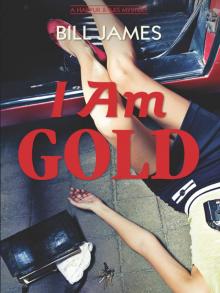 I Am Gold
I Am Gold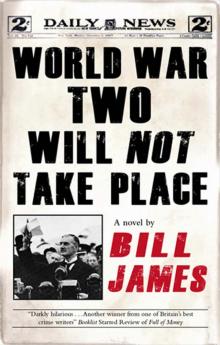 World War Two Will Not Take Place
World War Two Will Not Take Place Pix (Volume Book 24) (Harpur & Iles Mysteries)
Pix (Volume Book 24) (Harpur & Iles Mysteries)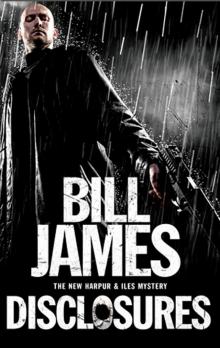 Disclosures
Disclosures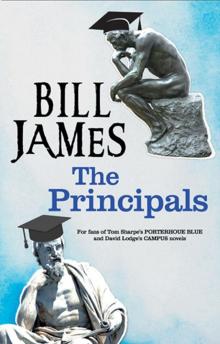 The Principals
The Principals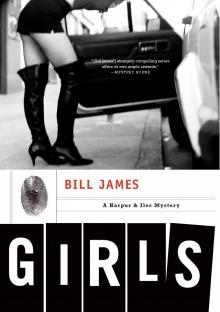 Girls
Girls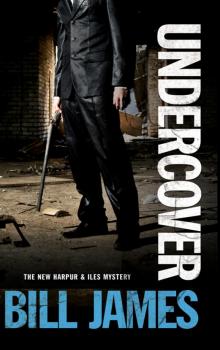 Undercover
Undercover Come Clean (1989)
Come Clean (1989)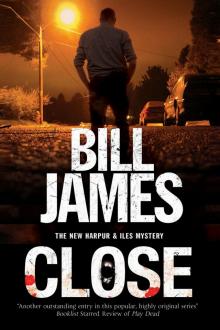 Close
Close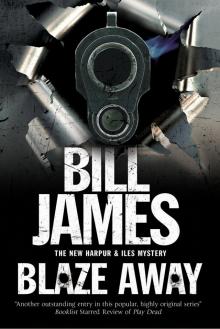 Blaze Away
Blaze Away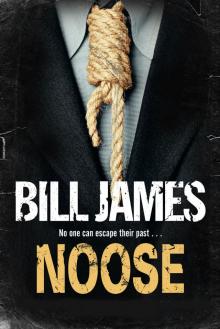 Noose
Noose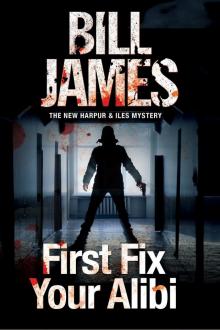 First Fix Your Alibi
First Fix Your Alibi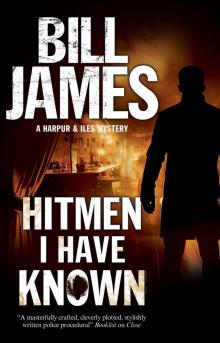 Hitmen I Have Known
Hitmen I Have Known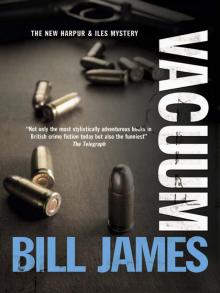 Vacuum
Vacuum Play Dead
Play Dead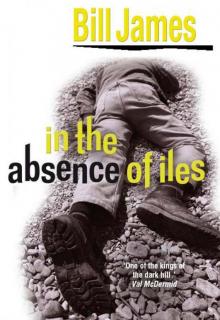 In the Absence of Iles
In the Absence of Iles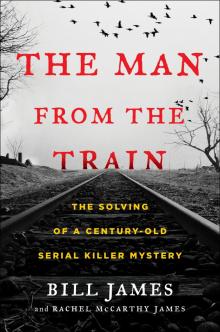 The Man from the Train
The Man from the Train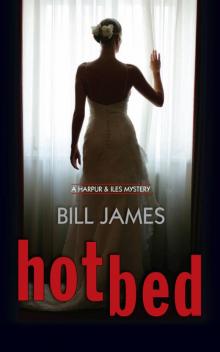 Hotbed
Hotbed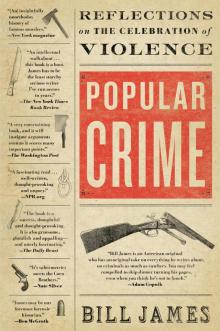 Popular Crime
Popular Crime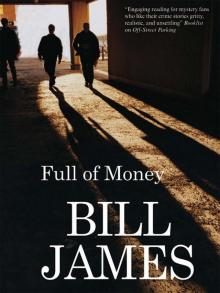 Full of Money
Full of Money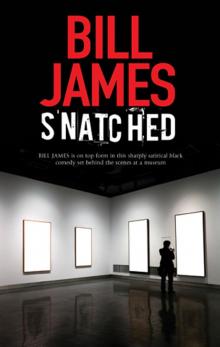 Snatched
Snatched